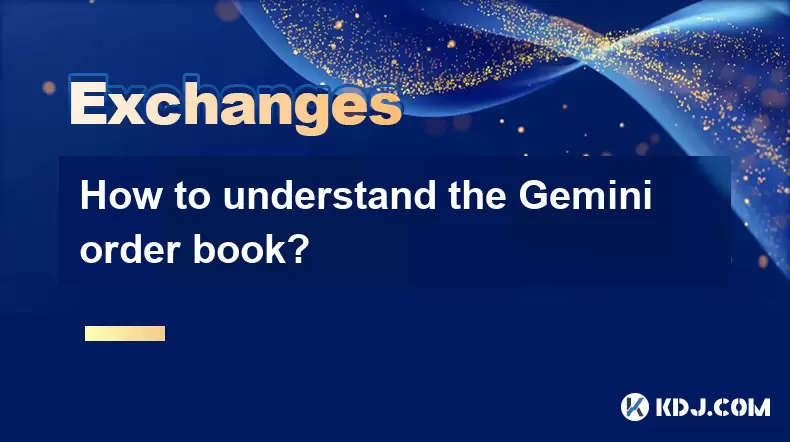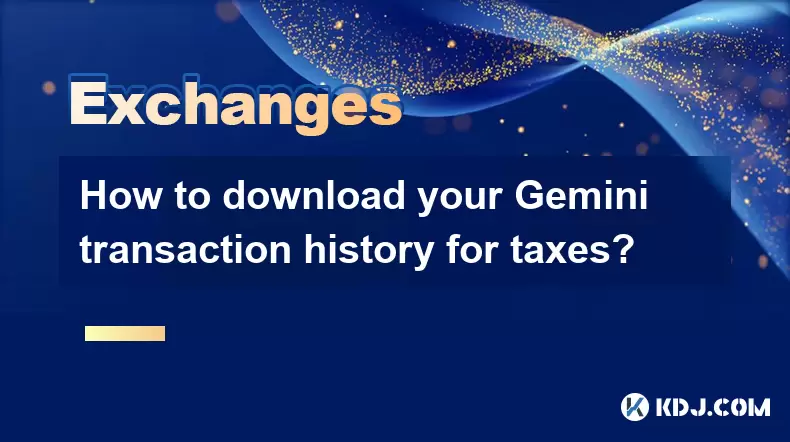-
 Bitcoin
Bitcoin $113900
0.81% -
 Ethereum
Ethereum $3472
0.21% -
 XRP
XRP $2.898
1.45% -
 Tether USDt
Tether USDt $0.0000
0.04% -
 BNB
BNB $748.0
0.32% -
 Solana
Solana $162.1
0.13% -
 USDC
USDC $0.9999
0.02% -
 TRON
TRON $0.3256
0.52% -
 Dogecoin
Dogecoin $0.1989
1.70% -
 Cardano
Cardano $0.7255
3.59% -
 Hyperliquid
Hyperliquid $38.00
1.15% -
 Stellar
Stellar $0.4002
7.96% -
 Sui
Sui $3.422
1.21% -
 Chainlink
Chainlink $16.22
2.48% -
 Bitcoin Cash
Bitcoin Cash $540.4
1.98% -
 Hedera
Hedera $0.2466
6.42% -
 Ethena USDe
Ethena USDe $1.001
0.03% -
 Avalanche
Avalanche $21.39
0.66% -
 Toncoin
Toncoin $3.621
1.12% -
 Litecoin
Litecoin $109.5
0.60% -
 UNUS SED LEO
UNUS SED LEO $8.953
-0.07% -
 Shiba Inu
Shiba Inu $0.00001221
2.27% -
 Polkadot
Polkadot $3.589
2.06% -
 Uniswap
Uniswap $9.124
2.03% -
 Monero
Monero $294.4
0.24% -
 Dai
Dai $1.000
0.02% -
 Bitget Token
Bitget Token $4.322
0.76% -
 Pepe
Pepe $0.00001046
2.30% -
 Cronos
Cronos $0.1327
3.25% -
 Aave
Aave $257.5
1.79%
What cryptocurrencies can I stake on Coinbase?
Stake crypto on Coinbase to earn rewards in supported assets like ETH, ADA, and SOL, with rewards paid weekly and fees deducted from earnings.
Aug 03, 2025 at 01:51 am

Understanding Staking on Coinbase
Staking on Coinbase allows users to earn rewards by participating in the validation of transactions on various proof-of-stake (PoS) blockchains. When you stake crypto, you lock up your coins to support network security and operations, and in return, you receive staking rewards in the form of additional cryptocurrency. Coinbase simplifies this process by managing the technical aspects, making it accessible even to users who are not technically inclined.
The staking feature is available directly within the Coinbase app and website, and users can begin staking with as little as the minimum required amount for each supported asset. Rewards are typically distributed weekly, and the annual percentage yield (APY) varies depending on the cryptocurrency and network conditions.
Supported Cryptocurrencies for Staking
Coinbase supports staking for a growing number of cryptocurrencies. As of now, the following digital assets are eligible for staking directly through the platform:
- ETH (Ethereum): After the Ethereum network transitioned to proof-of-stake in 2022, staking became a core feature. Coinbase allows users to stake as little as 0.01 ETH, removing the traditional 32 ETH requirement.
- ADA (Cardano): Users can stake ADA to support the Cardano blockchain and earn rewards. Coinbase handles delegation to stake pools on the user's behalf.
- SOL (Solana): Solana uses a proof-of-stake consensus mechanism, and staking SOL through Coinbase helps validate transactions and secure the network.
- DOT (Polkadot): Polkadot enables staking through its nominated proof-of-stake system. Coinbase acts as a nominator, selecting validators to maximize security and returns.
- ATOM (Cosmos): Cosmos uses a delegated proof-of-stake model. Users can stake ATOM and earn rewards while helping secure the Cosmos Hub.
- ALGO (Algorand): Algorand supports pure proof-of-stake. Staking ALGO on Coinbase contributes to block validation and consensus.
- XTZ (Tezos): Tezos uses a liquid proof-of-stake mechanism. Users can stake XTZ and continue to trade or transfer their tokens while earning rewards.
- ICP (Internet Computer): ICP staking is available through Coinbase, allowing users to participate in network governance and earn staking rewards.
Each of these assets has its own staking mechanics, reward frequency, and APY, which are displayed in the Coinbase interface when you initiate staking.
How to Stake Cryptocurrency on Coinbase
Staking on Coinbase is a straightforward process designed for ease of use. Follow these steps to begin:
- Log in to your Coinbase account via the website or mobile app.
- Navigate to the "Earn" section, which can be found in the main menu or dashboard.
- Browse the list of available staking opportunities. Cryptocurrencies eligible for staking will display their current APY and reward frequency.
- Select the cryptocurrency you wish to stake, such as ETH or ADA.
- Enter the amount you want to stake. Ensure you meet the minimum staking requirement for that asset.
- Review the staking details, including estimated rewards and lock-up periods if applicable.
- Confirm the transaction using your preferred authentication method (e.g., 2FA).
- Once confirmed, your coins will be staked, and rewards will begin accumulating.
Rewards are typically credited weekly, and you can view your staking balance and earned rewards in real time within your account.
Important Considerations When Staking
While staking on Coinbase is user-friendly, several factors should be understood before participating:
- Network Lock-Up Periods: Some assets, like ETH, may have temporary withdrawal restrictions due to network upgrades or phases. Coinbase provides notifications when withdrawals are enabled.
- APY Variability: The annual percentage yield is not guaranteed and can fluctuate based on network participation, inflation rates, and validator performance.
- Tax Implications: Staking rewards are considered taxable income in many jurisdictions, including the United States. Users should keep records of all staking rewards received.
- Security: Coinbase secures staked assets using institutional-grade infrastructure. However, users should still enable two-factor authentication (2FA) and use strong passwords.
- Delegation Control: In most cases, Coinbase manages validator selection on your behalf. You do not manually choose validators when staking through the platform.
Understanding these elements ensures a more informed and secure staking experience.
Withdrawing and Unstaking Assets
Unstaking your cryptocurrency may involve waiting periods due to blockchain protocol rules. For example:
- ETH unstaking requires queuing if the network is under congestion. Once initiated, it may take several days to receive your ETH back in your wallet.
- SOL and ADA typically allow unstaking with minimal delay, and funds are usually available within a few minutes to hours.
- Rewards continue to accrue up until the moment you initiate unstaking.
- To unstake, go to the "Earn" section, select the staked asset, and choose the "Unstake" option.
- Confirm the action and monitor your wallet for the return of funds.
Always check the current unstaking duration listed in the Coinbase interface, as it can vary with network conditions.
Frequently Asked Questions
Can I trade staked assets on Coinbase?
No, once you stake a cryptocurrency, those funds are locked and cannot be traded or transferred until you unstake them. However, some networks like XTZ allow you to retain liquidity under certain conditions.
Are staking rewards paid in the same cryptocurrency?
Yes, staking rewards are distributed in the same asset that you staked. For example, staking DOT will earn you more DOT, not another token.
Is there a minimum staking period on Coinbase?
There is no fixed minimum staking period. You can unstake at any time, but some networks impose unbonding periods that delay fund availability. These delays are due to blockchain rules, not Coinbase policies.
Does Coinbase charge fees for staking?
Yes, Coinbase deducts a service fee from your staking rewards. The fee varies by asset—for example, it’s typically 25% of earned rewards for ETH staking. This fee covers operational costs and is disclosed before you begin staking.
Disclaimer:info@kdj.com
The information provided is not trading advice. kdj.com does not assume any responsibility for any investments made based on the information provided in this article. Cryptocurrencies are highly volatile and it is highly recommended that you invest with caution after thorough research!
If you believe that the content used on this website infringes your copyright, please contact us immediately (info@kdj.com) and we will delete it promptly.
- Navigating the Meme Coin Mania: Cold Wallets, SHIB, and DOGE in 2025
- 2025-08-03 22:30:16
- Bitcoin's Price Fall and Scrutiny: What's a New Yorker to Think?
- 2025-08-03 22:30:16
- Shiba Inu's Resistance and Recovery Push: What's Next for SHIB?
- 2025-08-03 22:50:16
- Bitcoin, Hashcash, and Crypto Innovation: A Look at the Foundation and Future
- 2025-08-03 23:12:53
- Meme Coin Mania: Bonk, Pudgy Penguins, and the Quest for the Next Crypto Sensation
- 2025-08-03 22:50:16
- Binance Coin's Bull Run: Chain Upgrades, Token Burns, and the Road to $1000
- 2025-08-03 23:15:31
Related knowledge

How to set and manage alerts on the Gemini app?
Aug 03,2025 at 11:00am
Understanding the Gemini App Alert SystemThe Gemini app offers users a powerful way to stay informed about their cryptocurrency holdings, price moveme...

What are the websocket feeds available from the Gemini API?
Aug 03,2025 at 07:43pm
Overview of Gemini WebSocket FeedsThe Gemini API provides real-time market data through its WebSocket feeds, enabling developers and traders to receiv...

How to manage your portfolio on Gemini?
Aug 03,2025 at 10:36am
Accessing Your Gemini Portfolio DashboardTo begin managing your portfolio on Gemini, you must first log in to your account through the official websit...

How to understand the Gemini order book?
Aug 02,2025 at 03:35pm
What Is the Gemini Order Book?The Gemini order book is a real-time ledger that displays all open buy and sell orders for a specific cryptocurrency tra...

Is Gemini a safe and secure cryptocurrency exchange?
Aug 02,2025 at 10:42pm
Understanding Gemini’s Regulatory ComplianceGemini is a New York State-chartered trust company, which places it under the supervision of the New York ...

How to download your Gemini transaction history for taxes?
Aug 03,2025 at 09:15am
Understanding Gemini Transaction History for Tax PurposesWhen preparing your cryptocurrency tax filings, having a complete and accurate record of all ...

How to set and manage alerts on the Gemini app?
Aug 03,2025 at 11:00am
Understanding the Gemini App Alert SystemThe Gemini app offers users a powerful way to stay informed about their cryptocurrency holdings, price moveme...

What are the websocket feeds available from the Gemini API?
Aug 03,2025 at 07:43pm
Overview of Gemini WebSocket FeedsThe Gemini API provides real-time market data through its WebSocket feeds, enabling developers and traders to receiv...

How to manage your portfolio on Gemini?
Aug 03,2025 at 10:36am
Accessing Your Gemini Portfolio DashboardTo begin managing your portfolio on Gemini, you must first log in to your account through the official websit...

How to understand the Gemini order book?
Aug 02,2025 at 03:35pm
What Is the Gemini Order Book?The Gemini order book is a real-time ledger that displays all open buy and sell orders for a specific cryptocurrency tra...

Is Gemini a safe and secure cryptocurrency exchange?
Aug 02,2025 at 10:42pm
Understanding Gemini’s Regulatory ComplianceGemini is a New York State-chartered trust company, which places it under the supervision of the New York ...

How to download your Gemini transaction history for taxes?
Aug 03,2025 at 09:15am
Understanding Gemini Transaction History for Tax PurposesWhen preparing your cryptocurrency tax filings, having a complete and accurate record of all ...
See all articles

























































































